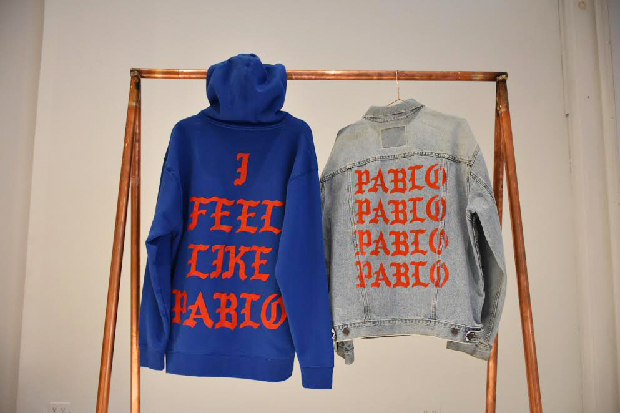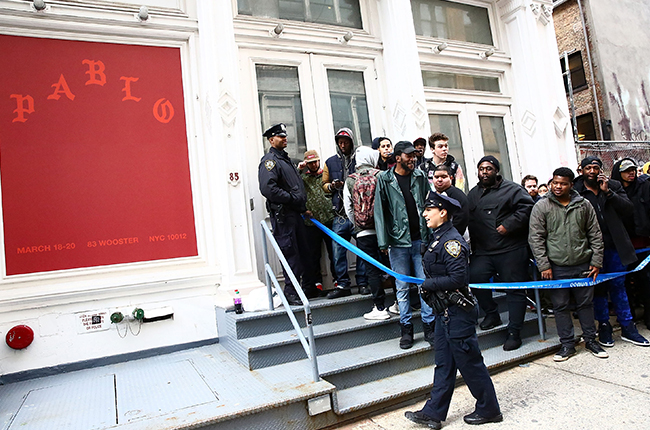
Kanye West is prone to exaggeration. (This is, after all, the man who referred to himself as “a god” on his second-to-last album.) So when the 38-year-old hip-hop artist and Adidas design collaborator tweeted Tuesday that his surprise, 3,600-square-foot Soho pop-up shop for Life of Pablo merchandise generated $1 million in clothing sales in just two of the three days it was open over the weekend, observers weren’t so much impressed as circumspect.
Kanye West Claims Pablo Pop-Up Shop Sold $1 Million Over Two Days
One such skeptic is Sucharita Mulpuru, a retail analyst at Forrester. “He is known for hyperbole, and given that he is a private citizen and it’s a private business, we may never known the true numbers,” she says. $1 million is an “awful lot” for two days of selling, she explains, marking “the upper end of any Manhattan retailer on a daily basis”; Macy’s Herald Square location moves more than $1 million in product most days, for example, but has more than 2 million square feet of selling space. “I’m not even sure how [West] would be processing that much inventory that quickly in a small format store — it couldn’t even fit $500,000 worth of merchandise unless every item was the size of a lipstick tube,” she argues.
Indeed, photos of the shop show a sparsely stocked space, with a handful of racks lining the perimeter. (Those store associates must have been restocking at lightning speed.)

Adelle Platon
Prices for Pablo merch ranged from $35 for blue and red beanies that read “I Feel Like Pablo” to $400 for a pair of distressed jean jackets, with the average price clocking in at $116.50. Assuming West sold more merchandise on the days the store was open longer (the pop-up was open for four hours on Friday evening and eight hours on Saturday and Sunday), he would have needed to sell $62,500 worth of goods, or about 536 items, an hour. (To break it down even further, that’s about nine items per minute.)
Feeling Like Pablo: Inside (and Outside of) Kanye West’s New York City Pop-Up Shop
Seems impossible, no? But Russ Miller, founder of pop-up retail specialist Vacant, which has worked on stores for several high-profile musicians including The Beatles, and Ana Pelucarte, co-founder of Pop-Up Mob, which has worked with French luxury fashion house Mugler and men’s streetwear brand Zanerobe on pop-up shops in downtown Manhattan, believe it is possible, given the reported level of demand for Pablo-branded goods, particularly among resellers. In fact, both noted that the Supreme store a few blocks over on Lafayette Street has likely generated similar, if not better, sales numbers on some release days. (A spokesperson for Supreme did not respond to a request for comment by press time.)

NEW YORK, NY – MARCH 18: NYPD guard the area near 83 Wooster Street in Soho at the Kanye West “Pablo Pop-Up Shop” In Manhattan on March 18, 2016 in New York City. (Photo by Astrid Stawiarz/Getty Images)
While $300,000 seems like a comparatively paltry sum at the end of the day, there’s no doubt about it: West’s pop-up venture was a triumph. “If you ask me, it was a success,” says Pelucarte. “Pop-ups are used for press and media, and If you break even, it’s already a success.”

No comments:
Post a Comment